



|
1760 |
The English artist Thomas Gainsborough, having settled in fashionable Bath, begins to paint the society portraits for which he is famous. He was also a serious landscape painter.
|
|
1761 |
At the Battle of Panipat, the Mahrathas, aiming to succeed the Mughals as rulers of India, are roundly defeated by the Afghans, led by their great leader Ahmad Shah Durrani.
The Bridgewater Canal, the work of the English engineer James Brindley, is opened, the first of many inland waterways which were to stimulate trade and industry in Britain.
The Italian Giovanni Battista Morgagni, professor of anatomy at Padua, founds the study of pathology with the publication of his major work On the Seats and Causes of Diseases.
|
|
1762 |
The Scotsman Robert Adam
is appointed architect to the King. Assisted by his brothers,
he gains a wide reputation for his interior design work in the
new neo-
The French social philosopher and political theorist Jean Jacques Rousseau produces his Social Contract on government reform, and his Émile, a treatise on new teaching methods.
The English clockmaker John Harrison
designs the first practical marine
chronometer. This finally resolves the age-
In his Orpheus and Eurydice the German composer Christoph Gluck rebels against the traditional Italian opera, using music to express and heighten the story’s emotional content. |
|
1763 |
The Treaty of Paris brings an end to the Seven Years War. Britain, emerging as the world's greatest colonial power, gains most of North America and virtual mastery of India.
Chief
Pontiac of the Ottawas unites a number
of Indian tribes and leads a co-
|
|
1764 |
The Englishman James Hargreaves invents the spinning jenny, greatly increasing the production of yarn. Hand spinners, fearing for their jobs, destroy his home and machine.
The Castle of Otranto, a medieval horror tale, is published by the English writer Horace Walpole. The first of the "Gothic novels, it sets a fashion for tales of the supernatural.
Osei Kwadwo becomes leader of the Ashanti in West Africa, and expands his kingdom. It continues to grow in size and strength, but comes up against the British in 1824 (G4).
|
|
1765 |
The Austrian prodigy Wolfgang Amadeus Mozart writes his first symphony at the age of nine. As we shall see, his great works are produced in the late 1700s along with those of his fellow countryman Franz Joseph Haydn (G3b).
|
|
1766 |
The Vicar of Wakefield is published by the Anglo-
The English painter George Stubbs publishes his Anatomy of the Horse, illustrated with his own engravings. His sporting pictures and country scenes were extremely popular.
|
|
1767 |
The last volume of Tristram Shandy is published. The work of the English writer Laurence Sterne, this bawdy novel contains two famous characters, Parson Yorick and Uncle Toby.
In North America the Mason-
Minna von Barnhelm, produced by the German dramatist Gotthold Lessing, marks the birth of classical German comedy. He was also an outstanding critic on a variety of subjects.
|
|
1768 |
The Royal Academy of Arts is founded in London by George III. The English artist Joshua Reynolds, one of the finest portrait painters of the day, is appointed its first president.
|
|
1769 |
The Frenchman Joseph Cugnot
builds a steam carriage and produces the first automobile.
Driven by a pair of high-
Commentaries on the Laws of England, the first comprehensive study of this subject, is written by the English jurist William Blackstone. It becomes widely used as a textbook.
|
|
1770 |
In Massachusetts, British troops open fire on a crowd of hecklers and kill five civilians. The "Boston Massacre" embitters still further relations between Britain and the colonists.
|
|
1771 |
The English inventor Richard Arkwright opens up factories at Nottingham and Cromford, using horse and water power to operate his own invention, the spinning frame. The factory system had arrived and, with it, the formative stage of the Industrial Revolution.
The Scottish novelist Tobias Smollett completes his major work The Expedition of Humphry Clinker. Earlier works included the adventures of Roderick Random and Peregrine Pickle.
|
|
1772 |
Prussia, Austria and Russia take part in the first Partition of Poland. The third partition in 1795 (G3b), puts an end to the country as an independent nation until 1918.
After rediscovering the source of the Blue Nile in 1770, the Scottish explorer James Bruce becomes the first European to follow this river's course to its confluence with the White Nile.
The Englishman Warren Hastings
is appointed governor of Bengal and, two years later, the
first governor general of India. He dominates Anglo-
|
|
1773 |
A peasant revolt against serfdom breaks out in Russia. Led by Yemelian Pugachev, it is crushed the following year, and landowners are given even stricter controls over their serfs.
As a protest against a tax on tea, Colonists throw a cargo of tea into Boston harbour. This “Boston Tea Party” brings swift reprisals and leads to the War of American Independence.
The English man of letters, Samuel Johnson, starts out on his "Journey to the Western Islands of Scotland", accompanied by his talented biographer and friend James Boswell.
|
|
1774 |
To ensure their loyalty, the Quebec Act safeguards the language, faith and civil law of the 60,000 French Roman Catholics living in Canada, the former colonists of New France.
After six years of war with Turkey, the Treaty of Kuchuk Kainarji secures for Catherine the Great of Russia a foothold in the Crimea and access to the Black Sea and Mediterranean.
The German literary giant Johann Wolfgang von Goethe gains European fame with his Sorrows of Young Werther. His masterpiece, Faust, was not produced until 1808 (G3c).
The German-
|
|
1775 |
The American War of Independence opens with the battles of Lexington, Concord and Bunker Hill. The success of the militia forces greatly encourages the revolutionary cause.
In India the first of the Anglo-
The Scottish engineer James Watt improves upon Newcomen’s pumping engine. By 1782 his series of innovations makes it suitable for use in industry’s growing factory system.
The comedy The Barber of Seville is produced by the French dramatist Beaumarchais, and The Marriage of Figaro follows in 1778. Later, both are made into famous operas.
The Irish-
Jeremy Bentham, the English philosopher, writes his first major work, Fragment on Government. His principles of Utilitarianism are contained in his treatise of 1789 (G3b).
|
|
1776 |
The American commander General George Washington wins the Battle for Boston, but the British drive him out of New York and, by the end of the year, he comes close to defeat.
The American Declaration of Independence is drawn up, but the task of providing a workable national constitution via the Articles of the Confederation proves very difficult. The document has a marked influence on political thought.
The Wealth of Nations is published by the Scottish economist Adam Smith. A treatise in favour of private enterprise and free trade, it has a profound influence on economic thought. |
|
1777 |
The French scientist Antoine Lavoisier publishes the theory of combustion. His method of research and his classification of elements mark the beginning of modern chemistry.
The British General Burgoyne is defeated by General Gates at the Battles of Saratoga. These victories prove a decisive turning point in the Colonists’ struggle for independence.
|
|
1778 |
Following the Battles of
Saratoga, a Franco-
The War of the Bavarian Succession breaks out between Prussia and Austria after Austria seizes Lower Bavaria. Frederick the Great wins a diplomatic victory a year later.
|
|
1779 |
The Englishman Samuel Crompton invents his "spinning mule", a machine which was destined to revolutionise the cotton industry and hasten the move to the factory system.
A Franco-
Dutch farmers (Boers) in South Africa, moving inland, come into conflict with Bantu tribes near Fish River. This conflict is the first of a long series of Kaffir or Cape Frontier Wars.
|
|
1780 |
A rising against Spanish rule breaks out in Peru, led by an Indian claiming to be Tupac Amaru II, a descendant of the Inca chief killed in 1572. The revolt is crushed in 3 years.
In Ireland the leader Henry Grattan demands home rule. In London the Gordon Riots, a revolt against Popery, plunders Roman Catholic churches and leads to 300 deaths.
A serious plague and famine begins in Japan and, over the next six years, more than one million people die. These enormous losses hasten the breakdown of the feudal system.
|
|
1781 |
The American War of
Independence virtually comes to an end when the British, led
by General Cornwallis, surrender to a combined Franco-
In the Second of the
Anglo-
The German-
The Critique of Pure Reason is published by the German philosopher Immanuel Kant. As we shall see (1788 G3b), in this and later works he lays the foundation of modern philosophy.
The English man- |
|
1782 |
The Scottish engineer James Watt, still improving upon Newcomen’s pumping engine, converts it into a rotary action and makes steam power available for wide industrial use. |
|
1783 |
The Peace of Paris, a collection of treaties, finally brings an end to the American War of Independence. Britain recognises the "United States", but the new nation was to take some time in the making.
The next twenty years of George III’s reign (G3b) were to be no less eventful, with trouble in Ireland, the French Revolutionary Wars, and a recurrence of the king’s mental illness. |
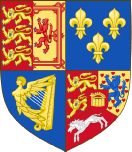






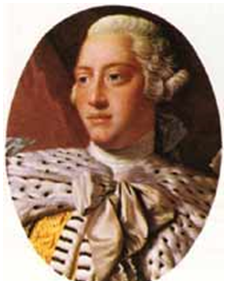 xxxxx
xxxxx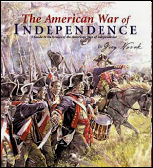 Not without good reason, the next
twelve years came to be known as the king's "personal rule", and it
was during this very period, as we shall see, that the policies he
pursued provoked the American War of Independence. Throughout the
rebellion the king remained adamantly opposed to any form of
concession. As a result, the protest smouldered on -
Not without good reason, the next
twelve years came to be known as the king's "personal rule", and it
was during this very period, as we shall see, that the policies he
pursued provoked the American War of Independence. Throughout the
rebellion the king remained adamantly opposed to any form of
concession. As a result, the protest smouldered on -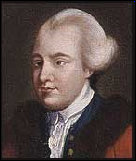
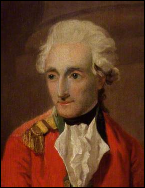 And open conflict was not confined to distant
overseas territories. At home, a revolt broke out in Ireland in 1763,
a protest against the harsh conditions endured by those working on the
land, and in April 1780 the Irish leader Henry Grattan (illustrated)
demanded Home Rule for Ireland. Later in the year, Ireland was granted
free trade with Britain and allowed to take part in the lucrative
trade with the colonies, but this was not sufficient. Nor did the
amendment of Poynings' Law in 1782, giving legislative initiative back
to the Irish Parliament, stop the protest. As we shall see, unrest
continued and in
And open conflict was not confined to distant
overseas territories. At home, a revolt broke out in Ireland in 1763,
a protest against the harsh conditions endured by those working on the
land, and in April 1780 the Irish leader Henry Grattan (illustrated)
demanded Home Rule for Ireland. Later in the year, Ireland was granted
free trade with Britain and allowed to take part in the lucrative
trade with the colonies, but this was not sufficient. Nor did the
amendment of Poynings' Law in 1782, giving legislative initiative back
to the Irish Parliament, stop the protest. As we shall see, unrest
continued and in 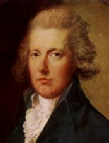
 The
English pottery manufacturer,
The
English pottery manufacturer, 
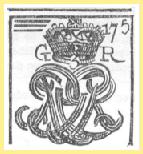 The
The
 The
rococo artist
The
rococo artist 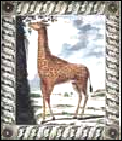 The
French naturalist
The
French naturalist 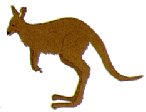 The
English explorer
The
English explorer  The
Swedish chemist
The
Swedish chemist  The
Englishman
The
Englishman 
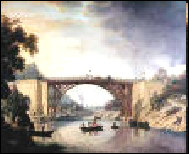 The
first cast-
The
first cast-
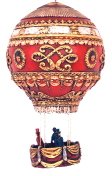 In
France, a hot-
In
France, a hot-